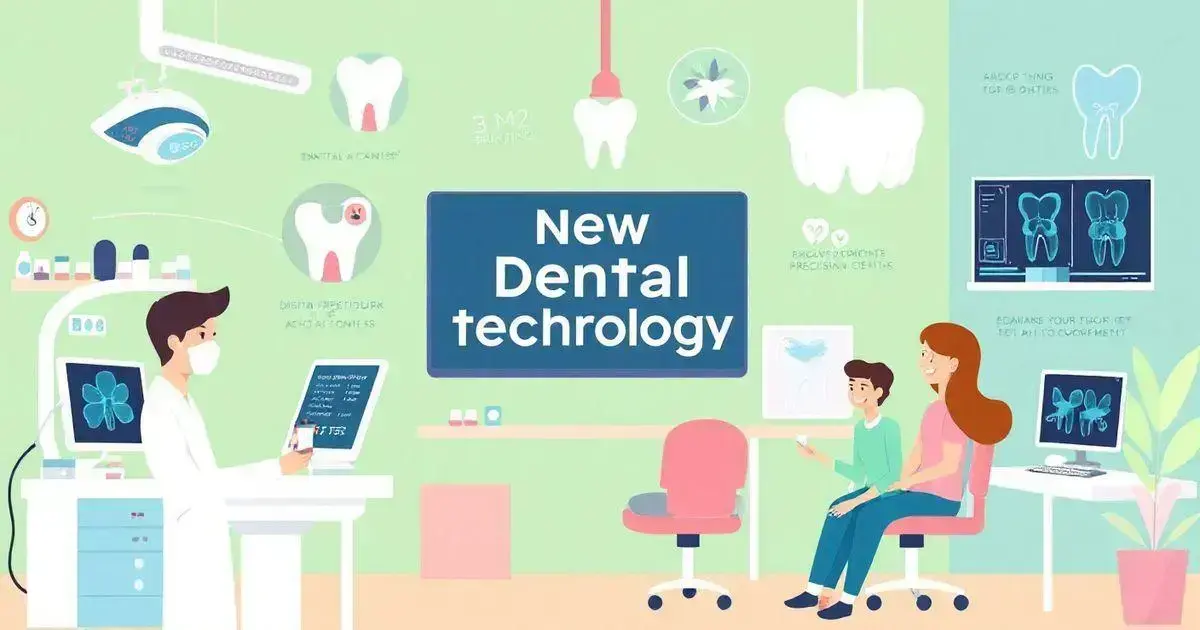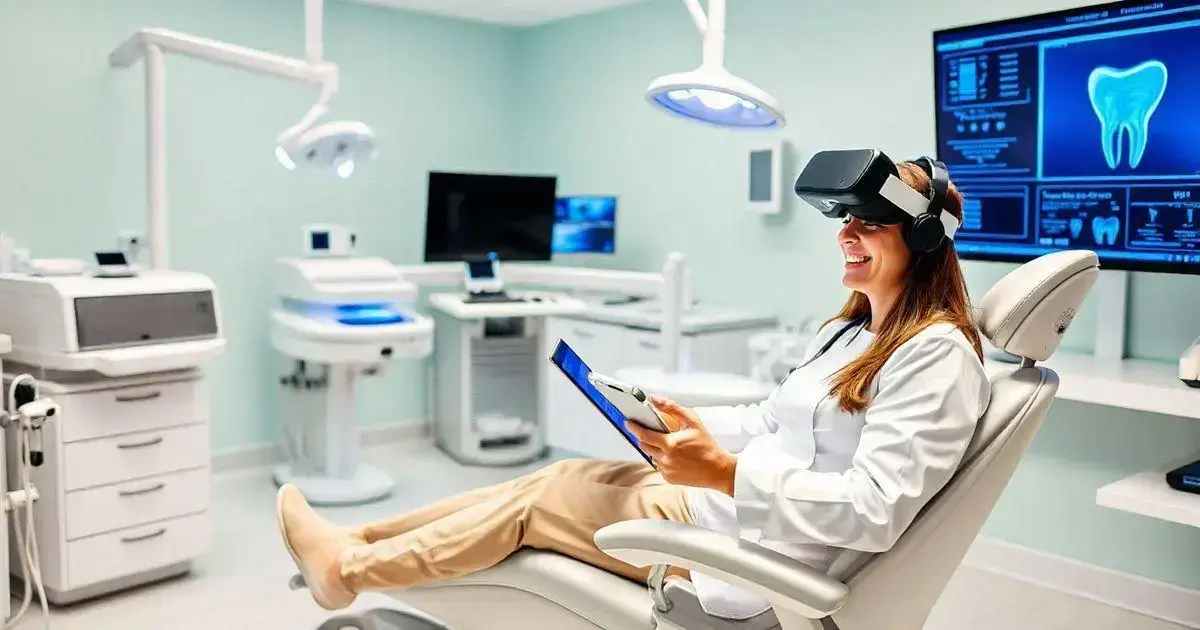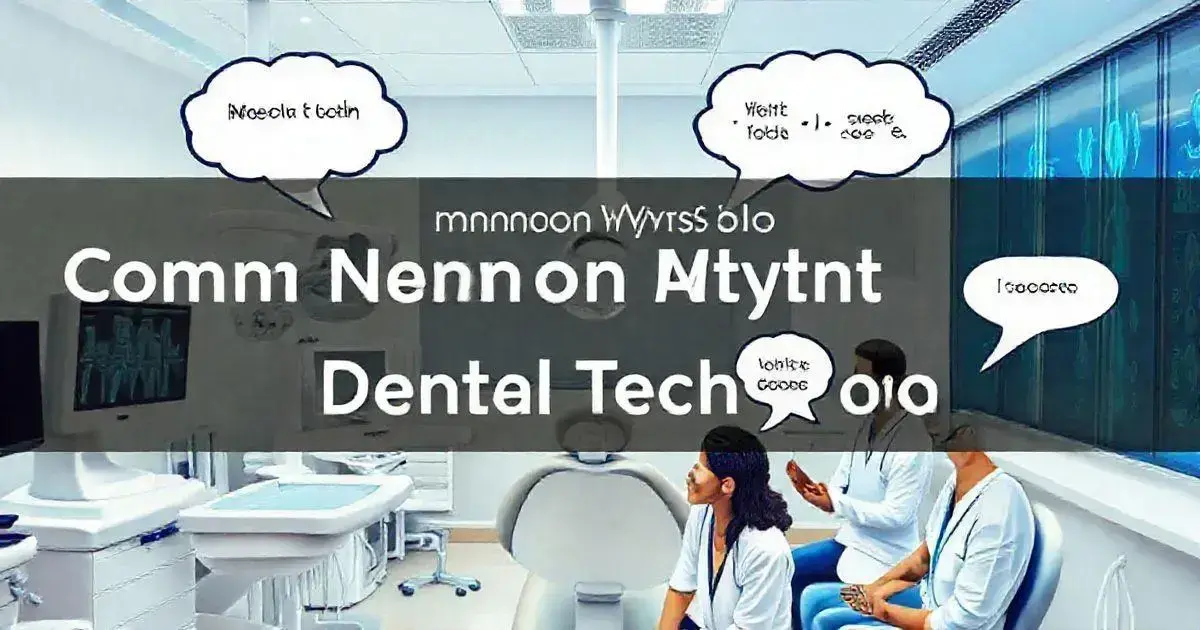New dental technology is changing the landscape of oral health care, making treatments more efficient and patient-friendly.
Innovations such as laser dentistry and digital impressions have made dental visits less daunting and more effective.
In this article, we will dive into the exciting developments within new dental technology, the benefits it offers to patients, and how it is shaping the future of dental care.
What is New Dental Technology?
New dental technology refers to the latest advancements and innovations in the field of dentistry that enhance diagnosis, treatment, and overall patient care.
These innovations include digital imaging, robotic dentistry, and tele-dentistry, which aim to improve the effectiveness and efficiency of dental procedures.
For instance, digital X-rays reduce radiation exposure and provide instant results, allowing dentists to make quicker decisions regarding treatment plans.
Another exciting aspect of new dental technology is the use of laser Dentistry, which can minimize discomfort during procedures and accelerate healing times for patients.
This approach also allows for more precise treatments, significantly reducing the need for traditional drills in some cases.
Overall, new dental technology not only enhances the patient’s experience but also supports dental professionals in providing higher quality care and achieving better clinical outcomes.
Benefits of New Dental Technology

The benefits of new dental technology are numerous and impactful. First, these advancements improve the quality of care that dental professionals can provide. For example, digital imaging enhances the ability to diagnose issues accurately, leading to more effective treatment plans.
Additionally, many new technologies streamline procedures, reducing the time patients spend in the dentist’s chair. This efficiency not only helps patients save time but also allows dentists to see more patients throughout the day.
Another significant advantage is the reduction in discomfort for patients. Techniques like laser dentistry minimize pain and promote quicker recovery. This makes dental visits less stressful for those who may have anxiety about receiving treatment.
Moreover, new dental technology can enhance communication between dental staff and patients. Tools like patient portals allow for easy access to treatment information and appointment scheduling, improving patient engagement.
Finally, these advancements support preventive care efforts, helping patients maintain better oral health and avoid more significant issues down the line. Overall, new dental technology offers vital improvements that benefit both patients and dental practices.
Latest Advances in Dental Instruments
The latest advances in dental instruments include a range of technologies that enhance both precision and efficiency in dental practice. One significant development is the use of digital scanners that replace traditional mold making for tooth impressions. These devices provide fast and accurate digital impressions, leading to quicker outcomes for patients.
Another exciting advancement is the introduction of 3D printing in dentistry. This technology allows for the creation of customized dental prosthetics, such as crowns and dentures, with remarkable speed and accuracy. 3D printing not only saves time but also reduces material waste, benefiting both the practice and the environment.
The use of wireless dental instruments has also become popular. These tools offer greater maneuverability and comfort for both dentists and patients. They allow for more precise work without the hindrance of cords, enhancing the overall efficiency of procedures.
Additionally, advancements in laser technology provide dentists with tools that can treat soft tissue with less pain and faster healing. Lasers can be used for procedures like gum contouring and cavity treatment, improving patient comfort.
Finally, the integration of smart technology into dental instruments enables data collection during procedures. This data can enhance diagnostics and treatment planning, leading to improved patient outcomes. Overall, these latest advances in dental instruments are reshaping the way dentists provide care.
How New Dental Technology Improves Patient Experience

New dental technology improves patient experience in many ways. First, these advancements lead to more accurate diagnoses. Tools like digital X-rays provide clearer images, which help dentists identify issues quickly and accurately.
Additionally, many new technologies reduce treatment time. For example, the use of laser dentistry allows for less invasive procedures, meaning patients spend less time in the chair and can return to their daily lives sooner.
Patient comfort is also enhanced through new technology. With innovations like sedation dentistry, patients experience less anxiety during treatments. This means more people are willing to seek necessary dental care.
The integration of tele-dentistry has also transformed how patients connect with their dentists. Patients can now consult their dentists remotely, which eliminates the need for office visits for simple issues.
Moreover, advancements in patient management systems allow for better communication about treatment plans and appointment reminders. This helps patients stay informed and engaged in their care.
Finally, new dental tech supports preventive care by providing patients with tools and information to maintain their oral health at home. Overall, these elements contribute to a significantly improved patient experience in modern dentistry.
The Future of New Dental Technology
The future of new dental technology looks very promising. Innovations such as artificial intelligence and robotic systems are set to transform dental practices. AI can analyze patient data quickly, helping dentists make better decisions and customize treatments.
Moreover, tele-dentistry is changing how patients receive care. With remote consultations, patients can easily access dental advice without going to the office. This convenience encourages more people to seek dental care.
3D printing technology will continue to evolve, allowing for faster and more personalized dental appliances. This means that crowns and dentures can be made with precision in a fraction of the time.
Additionally, the use of biomaterials is on the rise. These materials can mimic natural tooth structure and aid in regeneration. This is exciting, as it opens up new possibilities for treating dental issues.
Overall, the future of new dental technology promises to make dental visits easier, quicker, and more effective for everyone.
Common Myths About New Dental Technology

There are many common myths about new dental technology that can lead to misunderstandings.
One myth is that laser dentistry is painful. In reality, laser procedures are often less painful than traditional methods and can speed up recovery times.
Another misconception is that new technologies are only for high-end dental offices. Many practices now use advanced tools, making them available to most patients regardless of location or budget.
People often think that digital X-rays expose them to more radiation than traditional X-rays. However, digital X-rays actually use significantly less radiation, making them safer for patients.
Additionally, some believe that teledentistry can’t provide accurate diagnoses. In truth, remote consultations can be very effective and give dentists valuable insights into a patient’s condition.
Lastly, there’s a belief that new dental technology is only focused on cosmetic issues. While aesthetics are important, much of the technology is aimed at improving overall health and preventing serious dental problems.
How to Choose a Dentist Using New Dental Technology
Choosing a dentist who uses new dental technology can significantly enhance your dental experience. First, look for dentists who offer digital imaging, as it provides quicker, more accurate diagnoses compared to traditional X-rays. This can save time and reduce the number of visits needed for treatment.
Next, consider practices that utilize laser dentistry. This technology often results in less discomfort during procedures and can improve healing times. Many patients prefer lasers because they often feel less pain and have quicker recovery periods.
Additionally, seek out dentists who offer teledentistry services. This allows for virtual consultations, which can be convenient for discussing minor issues without an in-person visit, making dental care accessible.
It is also important to check if the dentist uses 3D printing technology. This allows for the creation of customized dental devices like crowns and dentures in a short amount of time, which can enhance the fit and comfort.
Finally, read online reviews to see what other patients say about their experiences with the technology used in the practice. This can provide insights into how effective and comfortable their treatments were.
Conclusion
In summary, new dental technology offers a range of innovative solutions that significantly enhance patient care and improve the overall dental experience.
From accurate diagnoses with digital imaging to less painful treatments with laser dentistry, these advancements address common concerns and fears associated with dental visits.
Additionally, the convenience of teledentistry and the customization available through 3D printing are transforming how patients interact with their dental health.
As dental technologies continue to evolve, it is important for patients to seek out practitioners who are at the forefront of these developments.
By doing so, patients can ensure they are receiving the best possible care using the latest tools and techniques.
Embracing these new technologies not only enhances treatment outcomes but also promotes overall health and satisfaction in dental care.
FAQ – Frequently Asked Questions about New Dental Technology
What is new dental technology?
New dental technology refers to the latest advancements and innovations in dentistry that enhance diagnosis, treatment, and patient care.
How does new dental technology improve patient experience?
It improves patient experience by offering more accurate diagnoses, reducing discomfort during treatments, and increasing convenience through options like teledentistry.
What are some examples of new dental technology?
Examples include digital imaging, laser dentistry, 3D printing, and patient management systems.
Is new dental technology safe?
Yes, new dental technologies are designed to be safe and are often less invasive than traditional methods.
How can I find a dentist who uses new dental technology?
Look for dentists who advertise their use of advanced tools and technologies, and read reviews from other patients about their experiences.
Are new dental technologies expensive?
While initial costs may be higher, new dental technologies often lead to quicker procedures and improved outcomes, which can offset long-term costs.